The Astrological Spread
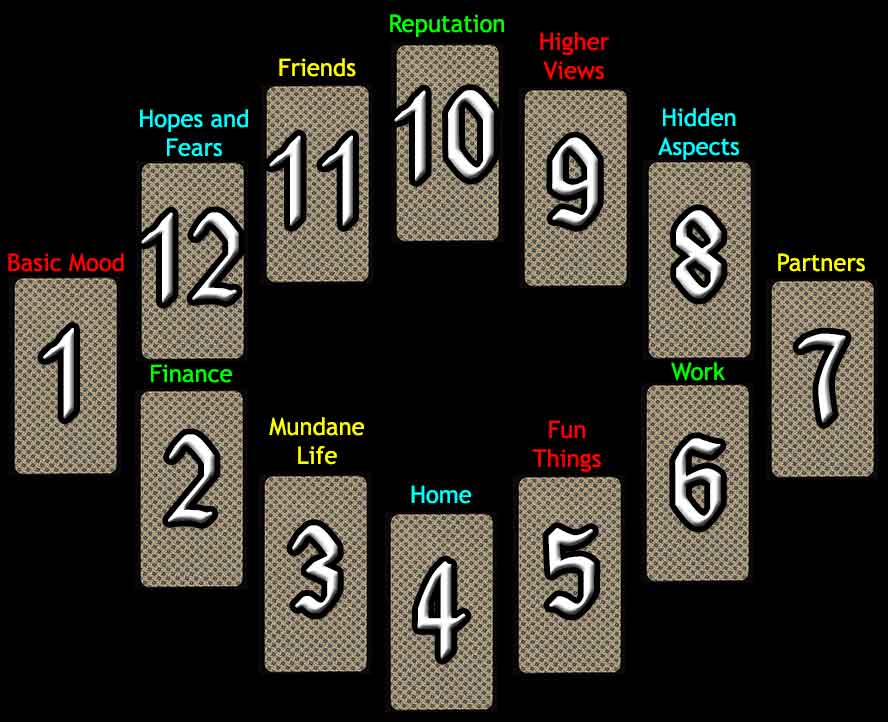
Difficulty: Complicated
The Astrological Tarot Spread is based upon houses of astrology. This complicated spread takes several steps to understand.
The first step is to interpret the tarot card for each individual position in the spread.
The second step involves further examination of the main axes. Positions 1 & 7 show the relationship theme, #1 representing the reader, #7 their partner. Positions 4 & 10 indicate motion. #4 indicates where the reader is now, and #10 suggests what they are moving towards.
The third step involves breaking down the chart into triads according to their house elements.
Positions 1, 5, & 9 represent the Fire triad, symbolising temperament and personal development.
Positions 2, 6, & 10 represent the Earth triad, concerned with materialism, money, and work.
Positions 3, 7, & 11 represent the Air triad, which has to do with thoughts, ideas, and connections with other people.
Positions 4, 8, & 12 represent the Water triad, the realm of emotions, moods, intuition, and yearnings.
Further, other patterns and correlations between certain numbers can be noted. Certain numbers such as the set of 5, 7, & 8 often speak about a particular theme.
Your Astrological Reading
| 10 | ||||||
| 11 |  |
9 | ||||
| 12 | 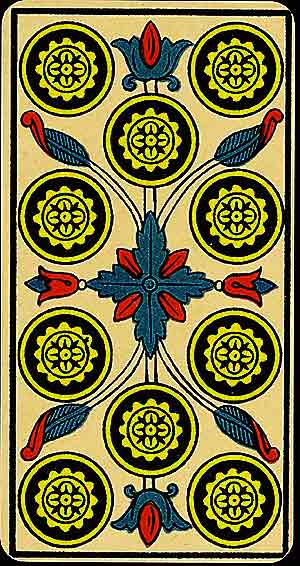 |
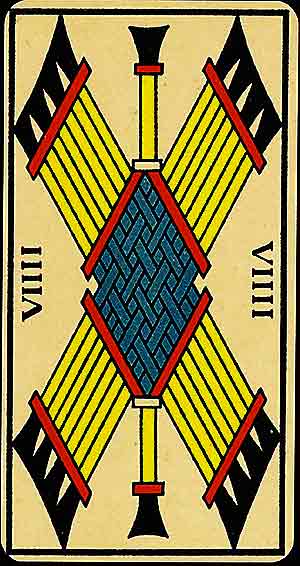 |
8 | |||
| 1 | 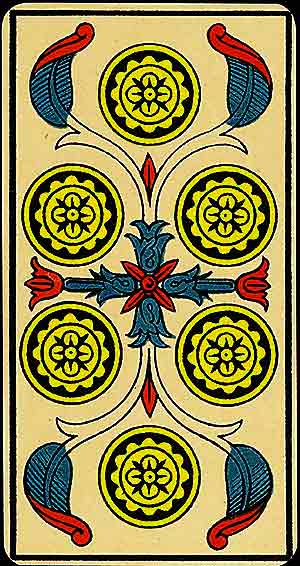 |
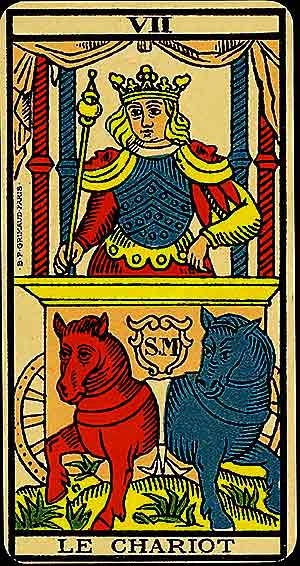 |
7 | |||
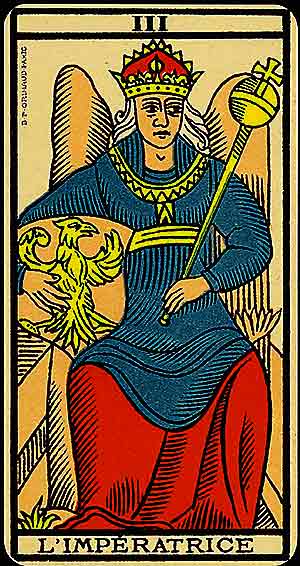 |
2 | 6 | 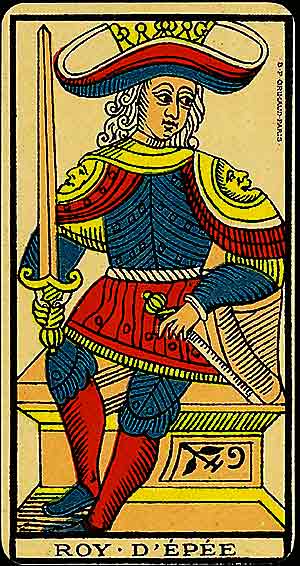 |
|||
 |
3 | 5 | 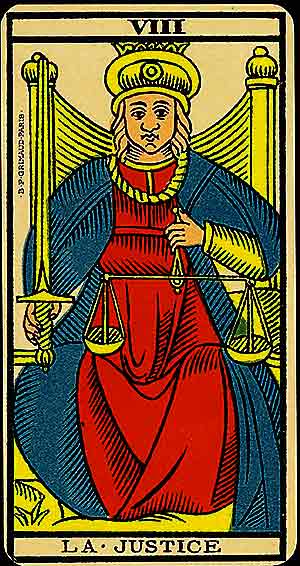 |
|||
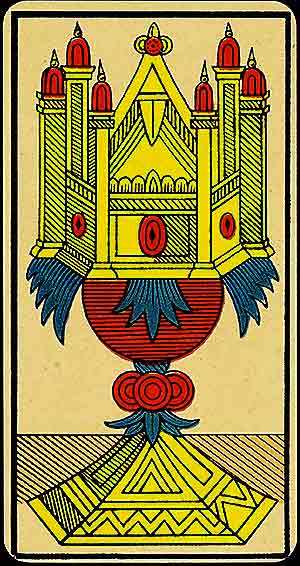 |
4 | 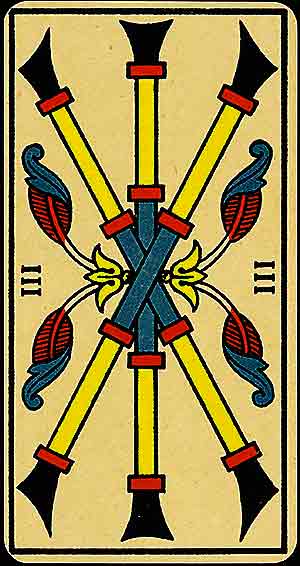 |
||||
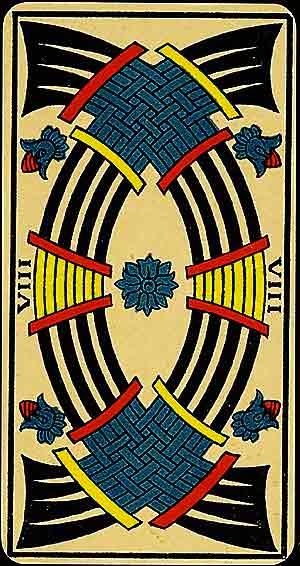 |
1: Basic Mood

(L'Impératri
Symbolism:
The Empress sits on her throne, holding a scepter that signifies authority. A shield bearing the symbol of Venus is nearby, emphasising love, fertility, and creation. She is adorned in flowing robes, indicating abundance.
Meaning:
The Empress is the archetype of creation and abundance, representing fertility, nurturing, and growth in all aspects of life. She is a motherly figure who provides support and encouragement, guiding you to cultivate your ideas or relationships into something beautiful. Her presence suggests a time of prosperity and fulfilment.
In relationships, she signifies a loving, nurturing connection. Spiritually, she urges you to embrace the rhythms of nature and the divine feminine within you, celebrating life's creative energy.
Keywords:
Creation, abundance, fertility, nurturing, growth, love, prosperity, nature, creativity, fulfilment.
2: Finance

(L'Hermite)
Symbolism:
The Hermit is an elderly figure carrying a lantern and a staff. The lantern symbolises inner wisdom and guidance, while the staff represents support and stability. His cloak signifies introspection, reflecting the solitude of his journey.
Meaning:
The Hermit represents introspection, wisdom, and solitude. He invites you to step back from external distractions and seek answers within. This card often appears during periods of self-discovery, encouraging you to listen to your inner voice.
In relationships, the Hermit may indicate a need for personal space or reflection. Spiritually, it highlights the quest for enlightenment and the value of solitary contemplation.
Keywords:
Wisdom, introspection, solitude, guidance, reflection, self-discovery, enlightenment, patience, inner truth, retreat.
3: Mundane Life

Symbolism:
A single, ornate cup stands at the centre, often crowned with a flowing fountain or delicate embellishments, symbolising abundance and divine inspiration. The card radiates themes of emotional renewal, spiritual connection, and the beginning of fulfilling relationships.
Meaning:
The Ace of Cups represents emotional abundance, new beginnings in relationships, and the outpouring of love and compassion. It signals the birth of deep emotional connections, healing, and a time to open your heart to joy and creativity. This card encourages you to embrace vulnerability and allow emotions to flow freely.
In relationships, it signifies profound intimacy and love. Spiritually, it symbolises divine inspiration and the awakening of the soul to universal love.
Keywords:
Love, new beginnings, emotional abundance, compassion, intimacy, healing, joy, vulnerability, creativity, spiritual awakening.
4: Home

Symbolism:
Eight swords form a restrictive and intricate pattern, evoking a sense of entrapment or limitation. The imagery reflects mental constraints, self-imposed boundaries, and the need for clarity to break free.
Meaning:
The Eight of Swords symbolises mental entrapment, self-doubt, or feeling stuck. It suggests that limitations are often self-imposed and can be overcome with clarity and courage. This card encourages you to reclaim your power and break free.
In relationships, it may reflect feelings of being trapped or misunderstood. Spiritually, it invites introspection to break free from limiting beliefs.
Keywords:
Restriction, self-doubt, entrapment, mental barriers, fear, powerlessness, clarity, courage, breaking free, introspection.
5: Fun Things

Symbolism:
Three batons intersect symmetrically, sprouting leaves that symbolise growth and creative expansion. The harmonious arrangement suggests progress, stability, and the nurturing of new ventures.
Meaning:
The Three of Batons signifies progress, expansion, and the realisation of plans. It suggests that initial efforts are beginning to yield results and encourages continued focus and perseverance. This card represents growth through exploration and the courage to venture beyond your comfort zone.
In relationships, it reflects shared goals and moving forward together. Spiritually, it symbolises broader horizons and the pursuit of greater understanding.
Keywords:
Expansion, progress, growth, foresight, exploration, achievement, opportunity, enterprise, perseverance, vision.
6: Work

(La Justice)
Symbolism:
Justice sits on a throne, holding a sword in one hand and scales in the other. The sword represents truth and decisiveness, while the scales signify balance and fairness. Her gaze is direct, indicating clarity and impartiality. The symmetrical composition of the card underscores equilibrium and order.
Meaning:
Justice represents truth, fairness, and the consequences of one's actions. It urges you to act with integrity and to weigh all factors before making decisions. This card often appears when a decision needs to be made or when karma is at play, reminding you that actions have lasting repercussions.
In relationships, Justice emphasises honesty and mutual respect. Spiritually, it calls for alignment between your actions and higher principles.
Keywords:
Truth, fairness, balance, integrity, accountability, karma, decisions, clarity, consequences, order.
7: Partners

Symbolism:
The Roy of Swords sits on a grand throne, gripping a sword with authority, surrounded by minimal decoration to emphasise his focus and intellect. This card represents mastery of logic, clear judgment, and leadership in matters requiring mental precision and fairness.
Meaning:
The King of Swords represents authority, logic, and ethical leadership. He advises using intellect and fairness to make decisions. This card encourages seeking truth and upholding moral integrity.
In relationships, it suggests rational communication and mutual respect. Spiritually, it represents mastery of the mind and the power of clear thought.
Keywords:
Authority, logic, truth, judgment, fairness, intellect, leadership, integrity, clarity, rationality.
8: Hidden Aspects

(Le Chariot)
Symbolism:
The Chariot shows a warrior standing in a chariot pulled by two horses of contrasting colors, symbolising opposing forces. The warrior wears a crown and holds a wand or reins, signifying control and determination. The canopy above him suggests moving forward from a place of stability into the unknown.
Meaning:
The Chariot signifies triumph through determination, discipline, and focus. It speaks to mastering conflicting forces and steering your life toward success. This card often appears when you are on the brink of achieving a goal, but it reminds you that persistence and self-control are essential.
In relationships, the Chariot suggests navigating challenges together. Spiritually, it emphasises aligning your willpower with your higher purpose.
Keywords:
Triumph, determination, focus, control, discipline, victory, mastery, momentum, perseverance, alignment.
9: Higher Views

Symbolism:
Nine batons are intricately arranged, with leaves flourishing despite their dense configuration, reflecting endurance and protection. The design suggests a moment of pause before completion, highlighting strength and resilience.
Meaning:
The Nine of Batons represents perseverance, resilience, and the ability to endure despite setbacks. It reflects a period of testing and the need to protect what you've built. This card encourages vigilance and inner strength, reminding you that the final stretch of a challenge often feels the most difficult.
In relationships, it suggests enduring hardships together or remaining cautious. Spiritually, it calls for faith in your ability to withstand trials.
Keywords:
Perseverance, resilience, endurance, defence, vigilance, struggle, inner strength, caution, determination, resolve.
10: Reputation

Symbolism:
Three swords intersect, forming a dynamic triangular arrangement, often accompanied by minimal decoration. This design represents conflict, heartache, or the challenging growth that follows emotional or mental pain.
Meaning:
The Three of Swords signifies heartache, betrayal, or grief. It is a card of emotional pain but also serves as a reminder of the healing and growth that follow. This card encourages you to confront and process your pain to move forward.
In relationships, it reflects loss, separation, or betrayal. Spiritually, it emphasises the transformative power of overcoming emotional trials.
Keywords:
Heartbreak, sorrow, betrayal, grief, emotional pain, healing, loss, separation, growth, transformation.
11: Friends

Symbolism:
Ten coins form a complex and interconnected pattern, adorned with rich, intricate designs that symbolise legacy and wealth. The imagery reflects lasting success, generational stability, and the fulfilment of long-term goals.
Meaning:
The Ten of Coins represents wealth, legacy, and long-term security. It signifies the culmination of efforts to build a stable, prosperous life for oneself and future generations. This card speaks to the material rewards that come from planning and sustained effort over time, especially in the realms of family, heritage, and financial stability.
In relationships, it highlights the importance of family, tradition, and long-term commitments. Spiritually, it represents the fulfilment of material goals and the creation of a lasting legacy.
Keywords:
Legacy, wealth, family, security, prosperity, tradition, stability, inheritance, culmination, long-term success.
12: Hopes and Fears

Symbolism:
Six coins are symmetrically arranged, often accompanied by flourishing floral motifs, suggesting harmony and generosity. The design reflects themes of giving and receiving, balance in material matters, and acts of kindness.
Meaning:
The Six of Coins represents generosity, charity, and the balance of give and take. It speaks to the distribution of wealth, whether material or spiritual, and suggests that sharing one's resources can bring rewards. This card also highlights the importance of fairness and balance, indicating that help will be returned when it is needed.
In relationships, it emphasises mutual support, equity, and the importance of both giving and receiving. Spiritually, it encourages a generous heart and the understanding that true wealth comes from shared abundance.
Keywords:
Generosity, charity, balance, fairness, reciprocity, wealth, giving, receiving, support, compassion.
